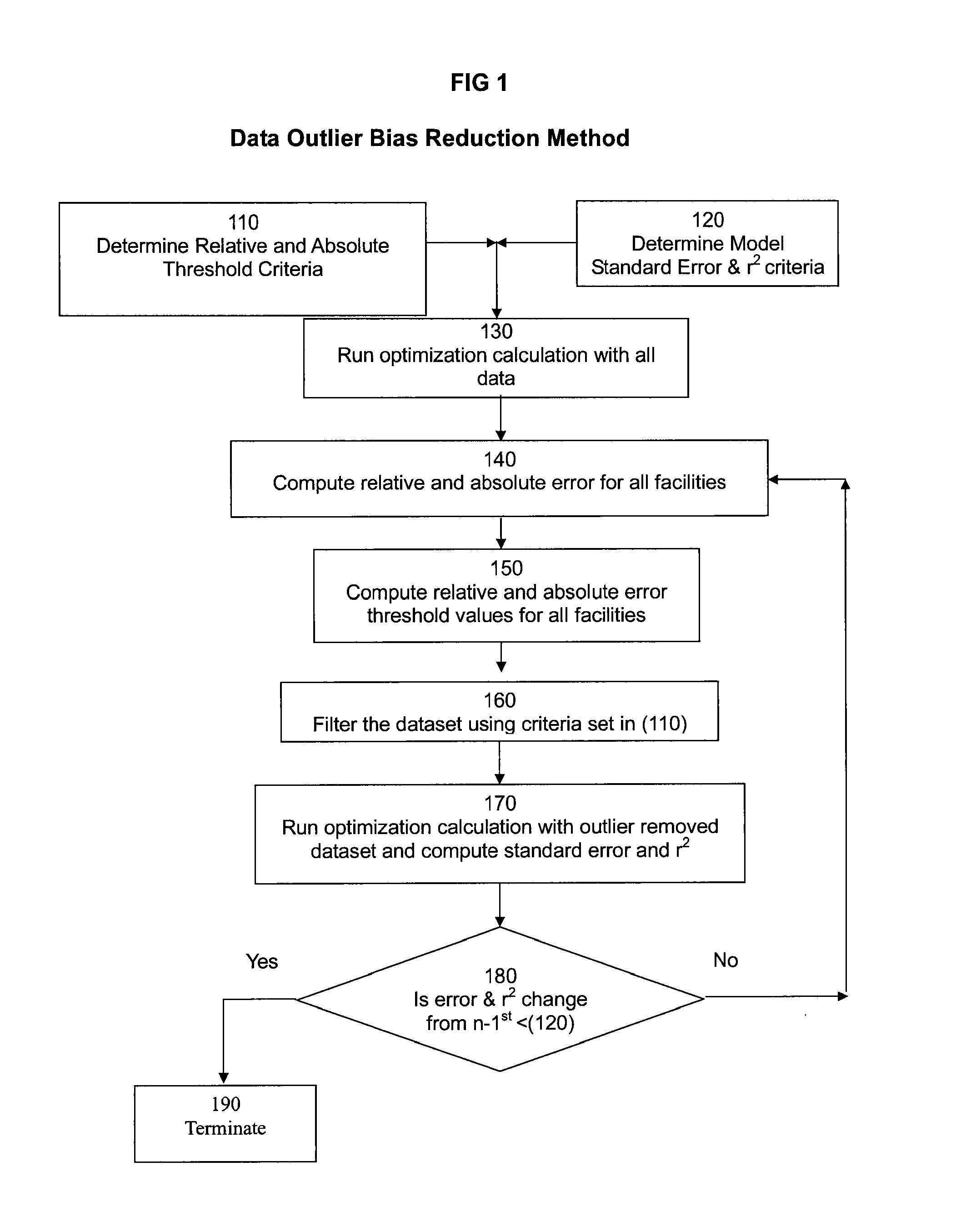Dynamic outlier bias reduction system and method
a technology of outlier bias and reduction system, applied in the field of data analysis, can solve problems such as censorship that carries the potential for changing calculation, unfair or unrepresentative judgment, etc., and achieve the effect of reducing outlier bias
- Summary
- Abstract
- Description
- Claims
- Application Information
AI Technical Summary
Benefits of technology
Problems solved by technology
Method used
Image
Examples
Embodiment Construction
[0029]The following disclosure provides many different embodiments, or examples, for implementing different features of a system and method for accessing and managing structured content. Specific examples of components, processes, and implementations are described to help clarify the invention. These are merely examples and are not intended to limit the invention from that described in the claims. Well-known elements are presented without detailed description so as not to obscure the preferred embodiments of the present invention with unnecessary detail. For the most part, details unnecessary to obtain a complete understanding of the preferred embodiments of the present invention have been omitted inasmuch as such details are within the skills of persons of ordinary skill in the relevant art.
[0030]A mathematical description of one embodiment of Dynamic Outlier Bias Reduction is shown as follows:
[0031]{circumflex over (X)}—Set of all data records: {circumflex over (X)}={c...
PUM
 Login to View More
Login to View More Abstract
Description
Claims
Application Information
 Login to View More
Login to View More - R&D
- Intellectual Property
- Life Sciences
- Materials
- Tech Scout
- Unparalleled Data Quality
- Higher Quality Content
- 60% Fewer Hallucinations
Browse by: Latest US Patents, China's latest patents, Technical Efficacy Thesaurus, Application Domain, Technology Topic, Popular Technical Reports.
© 2025 PatSnap. All rights reserved.Legal|Privacy policy|Modern Slavery Act Transparency Statement|Sitemap|About US| Contact US: help@patsnap.com



